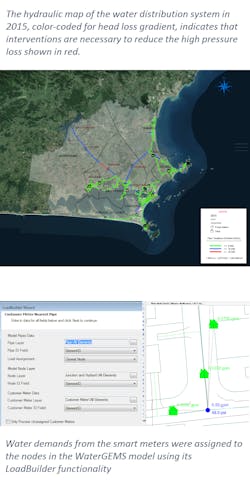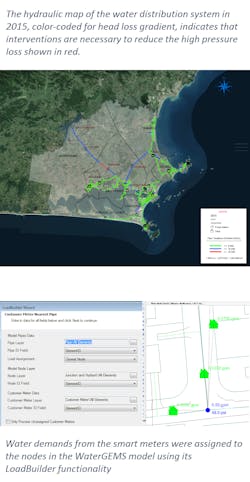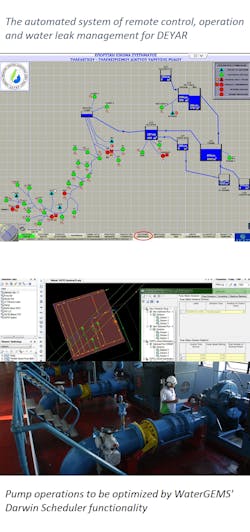Smart Water Networks: It’s only “Smart” if you Have Better Outcomes
How some water organizations are saving money and improving service through a smarter approach to making decisions
Water utilities constantly make decisions and take action in an attempt to meet high standards of service with minimal costs and disruption. It’s a difficult, ongoing balancing act. As long as there is a population to serve, our systems must be effective and efficient.
Naturally, we all want to be “smart” about our choices and trade-offs. Decisions we make may have an impact that affects our customers and our systems today, for decades to come, or even longer into the future.
What does it mean to be “Smart”?
There are a seemingly infinite number of opinions about what it means to become a “smart” utility, with most of those views centered on data collection and management. While data is certainly an important input, the truth is that your utility is only becoming smarter if you’re actually achieving better outcomes as a result. That requires reliable decision-making tools to put that data to good use.
“Collecting data for its own sake isn’t really helpful,” says Gregg Herrin, PE, director of product management of hydrology and hydraulics applications for Bentley. “But if you can take that data and feed it into a decision-support mechanism, like simulation software, you can effectively understand more about how your network is currently behaving, and how it will react under a wide range of ‘what-if?’ conditions. You can use those insights to make better decisions in every phase of the infrastructure lifecycle, from master planning, to capital planning and design, to operations and maintenance.”
Within most utilities, teams work diligently (planners, engineers, GIS specialists, operators, and others), but data and insights are rarely leveraged outside of their limited departmental roles. Often, departments may not even realize how much more value they would provide if their information could be shared more effectively.
To truly understand how your system functions and how possible decisions may impact it, you need to be able to connect your data sources (e.g. asset management systems, GIS, CIS, and SCADA) with behavioral simulation tools, such as hydraulic modeling software. “Connecting a SCADA system to hydraulic modeling tools is a great example of linking complementary technologies to ‘get smarter,” says Herrin. “The SCADA system can provide real-world information about past and present data such as flows, pressures and the hydraulic model can fill in simulated data between measurement points, and forecast into the future. On their own, each system has useful but restricted applications. Together their ability to feed smarter decision making is unlimited.”
Fortunately, more utilities are realizing the positive impact that they can have by connecting current data silos and sharing across teams, then leveraging that information to evaluate their options to make better choices.
Smarter System Expansion at Prolagos
Prolagos provides water and sewer services to five municipalities in the state of Rio de Janeiro, Brazil. The 2041 Master Plan considered the expansion of the water supply system for Região dos Lagos over short-term, medium-term, and long-term horizons. Key goals of this BRL 187 million (USD 57 million) project were to improve service levels, especially during tourist season, while reducing energy consumption by 50% and non-revenue water from 45 to 25%.
“The challenge of water utilities in the 21st century, especially in BRIC (Brazil, Russia, India, and China) countries, is to be able to respond quickly to the increase of water demand due to population growth in a more efficient way and with a sustainable approach. Therefore, the use of tools such as WaterGEMS allows companies to integrate the entire water network database available (including field data) and obtain the best scenario—the one that optimizes the water distribution and decreases energy consumption of the system." explains Wagner Oliveira de Carvalho senior project manager at Prolagos / AEGEA.
Switch to source editing mode.Switch to source editing mode.
For more information, download the case study >>
Smarter Use of Meter Data with Entech Engineering, Inc.
Oftentimes automated meter data collection is primarily viewed as a way to streamline billing processes, but there are additional advantages if a utility connects that data to other systems. Accurate water demands can be obtained from smart meters and latest hydraulic models can leverage this information.
John Brady, P.E. project manager at Entech Engineering, Inc. explains “In a project with our client, the town of North East, Maryland, we used smart meters to accurately allocate water demands in the hydraulic model of the town’s water distribution system.
The old meters were replaced with 2,600 Sensus iPERL AMR/AMI water meters, which automatically collect and log system and customer data. The meter information was loaded in ArcGIS. GIS and WaterGEMS integration enabled the transfer of accurate demands in the town’s WaterGEMS model and assignment to model nodes using the LoadBuilder functionality. This now offers higher confidence in the model results, and the town can now resolve problems more efficiently, potentially saving money, Brady said.”
For more information, download the presentation, as presented by John Brady at PA AWWA 2017 >>
Smarter Leak Detection with AKATT
The Municipal Water and Sewerage Company of Rhodes (DEYAR) manages the water and sewer networks for the Island of Rhodes in Greece, which consists of 50 water wells that feed nine water tanks. DEYAR retained AKATT as a consultant to maximize the municipality’s water consumption and improve cost-efficiency, by implementing water leakage controls and improving pump operations.
AKATT’s challenge was the integration of software products on a common platform so data could be exchanged across software. For the water network modeling and simulation, AKATT deployed WaterGEMS. Data from the SCADA system was imported into WaterGEMS using its SCADAConnect functionality. AKATT made smart infrastructure decisions based on the WaterGEMS hydraulic model, including water leak detection and control, and prompt repair of damaged pipes in the water network. These decisions helped DEYAR to reduce water loss, which led to increased revenue.
For more information, download the case study >>
Smarter Pumping to Reduce Costs in Manila
The need to obtain water demand data also plays a key role in operations. “To optimize pump operation strategies, you need to know exactly how much water pumps need to deliver to satisfy demands” notes Herrin. “An operator can use an accurate, well calibrated, hydraulic model to test various pump operation strategies and identify the option that satisfies demands while minimizing energy costs.”
Conducting a multi-objective analysis of providing appropriate service levels while minimizing operational costs contributes to making water operations smarter.
Manila Water Company supplies water to more than one million households in metro Manila, and the Philippines province of Rizal. Inefficient pump operation led to low pressures during peak demands, but caused excessively high pressures during off-peak periods, resulting in frequent pipe breaks.
Manila Water used data logging to develop accurate demand patterns for various customer profiles in their WaterGEMS hydraulic model. They then used that same model to define optimal pump operations, balancing peak power costs with the desired pressure conditions. They reduced power consumption by nearly 5% during off-peak hours, and more than 15% during peak, resulting in an annual cost savings of approximately USD 367,000.
For more information, download the case study >>
Smart Acceleration
More utilities are seeing the opportunities to get smarter, as the Internet of Things provides increasingly more data, and as champions within organizations do more to connect their data and teammates together.
“There is no limit to how far we can go in making our networks smarter. Herrin points out. “And, you don’t need to invest millions of dollars or replace all of your current assets to have an impact on decision-making. You can take whatever data you already have, and just start sharing it more. Your data logging can feed your modeling and engineering, your hydraulic modeling can feed your operational forecasting, and your operational insights can feed your maintenance and capital planning processes. Everyone benefits, not only within your organization, but also your customers. And those better outcomes – from more strategic planning, to better design decisions, to improved operational efficiency and beyond – are what truly make a utility smart.”
For more information, watch a video interview with Gregg Herrin >>



